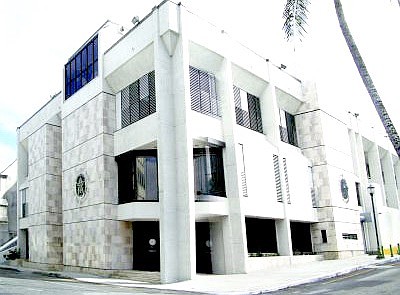By NEIL HARTNELL
Tribune Business Editor
nhartnell@tribunemedia.net
The Central Bank has pledged that credit unions will be subjected to “heightened oversight” because they have “very minimal excess capital” with which to withstand a surge in COVID-related loan delinquencies.
The regulator, in its Financial Stability Report for 2020, added that it was also keeping a particularly close eye on the sector because of its relatively large exposure to borrowers in the tourism industry, which is among the sectors hardest-hit by the pandemic and still has thousands of employees either on furlough or reduced working hours.
“Heightened oversight will be on credit unions, which operate with very minimal excess capital,” the Central Bank asserted. “After commercial banks, credit unions remained the second largest deposit-taking and loan granting institutions.
“Prior to the pandemic, the sector operated with very narrow capital buffers in comparison to banks, and also more concentrated exposures in some cases to the tourism industry. However, average liquidity ratios stayed comfortably above the minimum statutory thresholds. In the meantime, the sector received heightened protection from enrollment in the Deposit Insurance scheme, and remained under enhanced prudential oversight.”
The Central Bank revealed that total impaired loans in the credit union sector jumped by 17.3 percent, or $4.9m, in 2020 to total around $33.1m at year-end due to the economic fall-out from COVID-19. “Correspondingly, the ratio of delinquencies to total loans firmed to 15.2 percent from 12.3 percent in 2019,” the Central Bank said.
“In terms of the components, non-performing loans - which accounted for 72.4 percent of total delinquencies - grew by 4.3 percent ($1m) to $24m, extending the 12.7 percent increase a year earlier. In addition, short-term delinquencies (31-90 days) rose by 31.8 percent ($1.7m) to $7m, in line with the 31.6 percent expansion in the previous year.
“Given the rise in loan delinquencies, the collateral value of impaired facilities increased by 34.8 percent ($5.1m) from the recorded $14.7m in 2019. However, the value of uncollateralised exposures reduced by 1.6 percent ($0.2m) to $13.3m,” the Central Bank continued.
“Credit unions’ total provisions for loan losses grew by 10.1 percent ($0.3m) to $3.7m, following a 3.4 percent decline a year earlier. As a result, the ratio of provisions to total gross loans firmed by 22 basis points to 1.6 percent, while the coverage ratio for short-term arrears remained unchanged at 35 percent and for non-performing loans at 100 percent.”
Turning to capital adequacy, the Central Bank said the credit union sector’s combined capital ratio remained just above the 10 percent international PEARLS benchmark although there was greater negative exposure from reduced asset quality.
“With the total number of credit unions remaining at ten, total assets rose by 1.3 percent ($6.3m) to $482.3m in 2020, although lower than the 5.6 percent growth in the previous year. Underlying this outturn, deposits held with the league grew by 4.2 percent ($3.7m) to $93.7m, albeit below the 5.4 percent gain in 2019,” the regulator added.
“Contrastingly, loans to members, which comprised a dominant 46.8 percent of total assets, decreased by 4.8 percent ($11.4m) to $225.9m, a reversal from a 1.3 percent increase last year. A breakdown of the loan portfolio showed that consumer purchases remained the main form of credit at 68.3 percent, followed by mortgages (30.4 percent) with lowered figures for SME development (0.7 percent) and other lines of credit (0.6 percent).”
Credit union membership stood at 45,467 individuals as at year-end 2020, with a total asset base of $482.3m. “The market continued to be dominated by one institution, which represented approximately 46.5 percent of the sector’s total assets, while smaller entities comprised more modest market shares, ranging from 0.3 percent to 14.9 percent,” the Central Bank added.





Comments
Use the comment form below to begin a discussion about this content.
Sign in to comment
Or login with:
OpenID